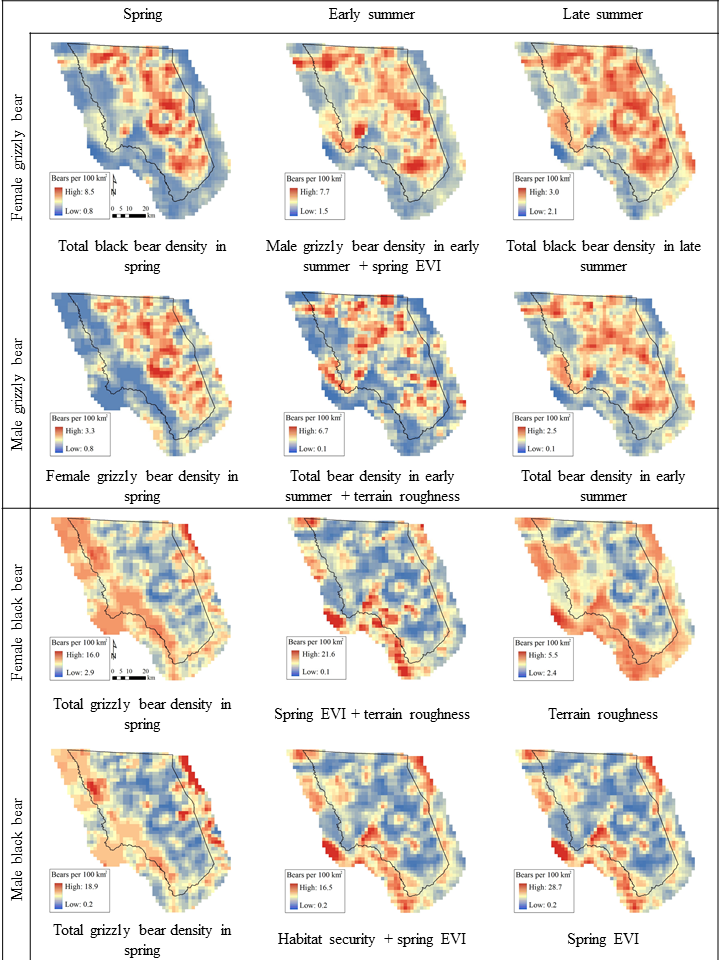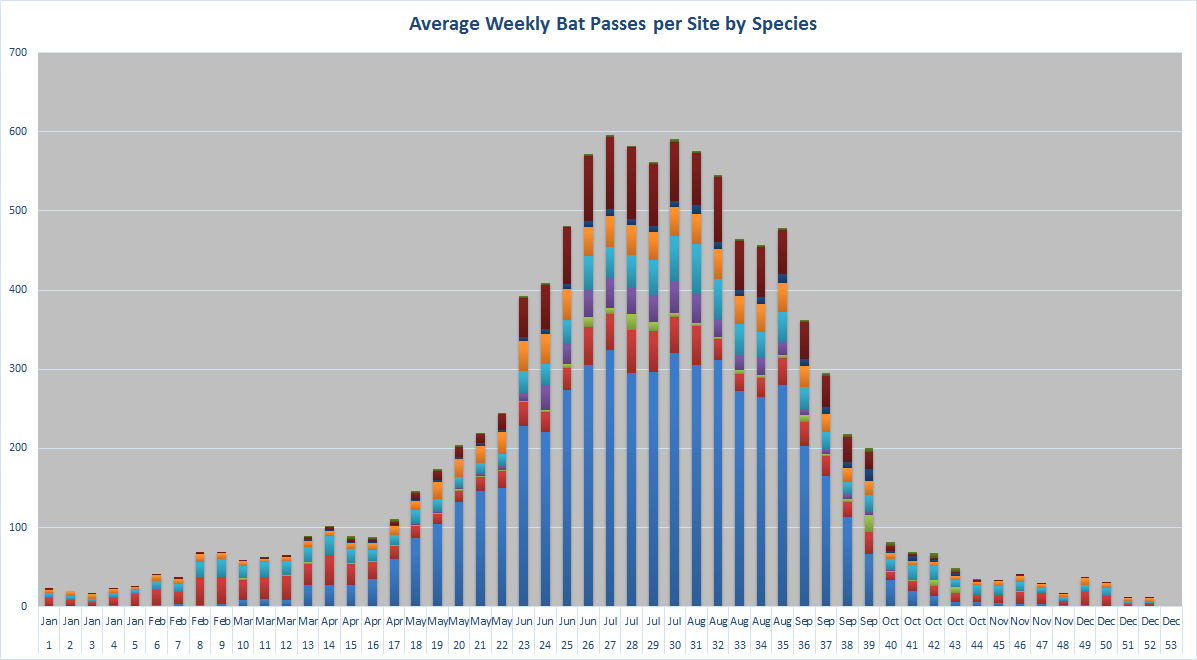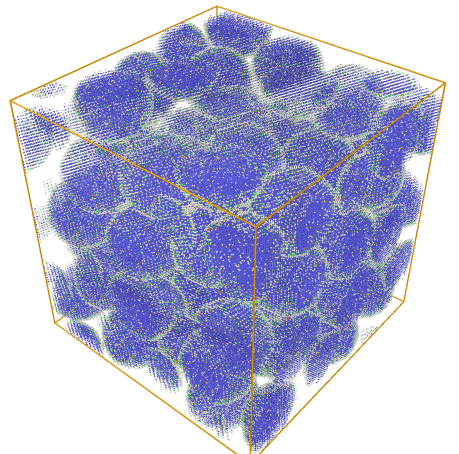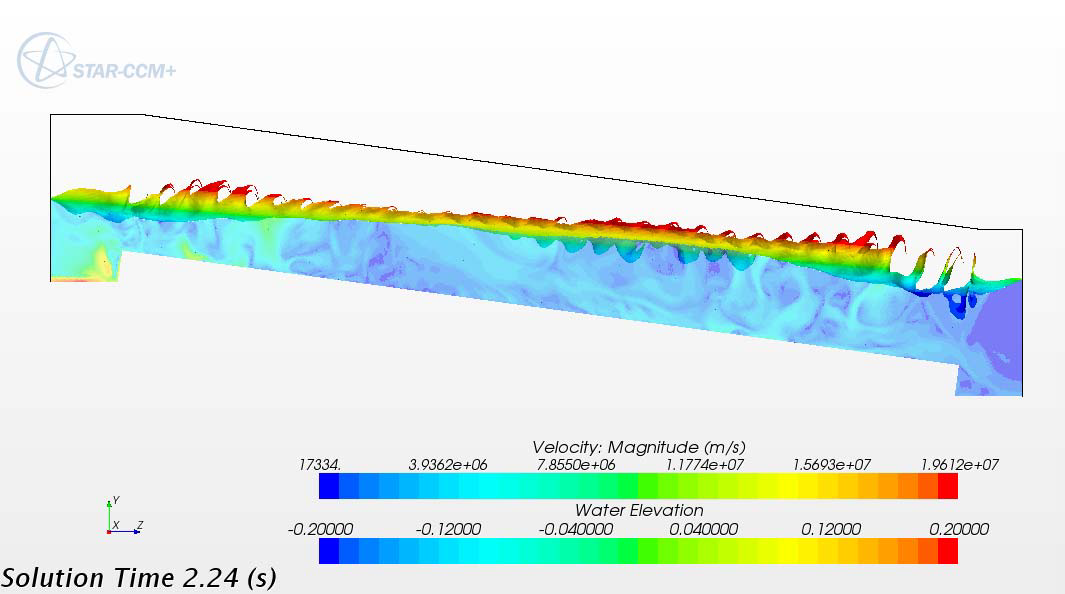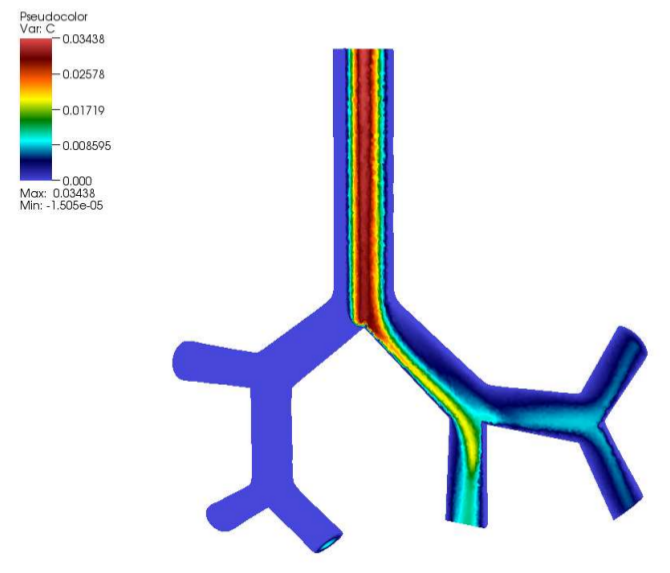Difference between revisions of "Featured research"
From Montana Tech High Performance Computing
| Line 1: | Line 1: | ||
Below are some research projects that has utilized our HPC. [[Contacts|Contact]] us if you want your projects list here. | Below are some research projects that has utilized our HPC. [[Contacts|Contact]] us if you want your projects list here. | ||
---- | ---- | ||
| + | |||
| + | <div class="row"> | ||
| + | <div class="small-1 columns">[[File:.png|link=Grizzly_Bear_Population_Modeling]]</div> | ||
| + | <div class="small-9 columns"> | ||
| + | ''' [[Using Blast+ to compare methods for determining bacterial populations]] ''' | ||
| + | <p align="justify"> | ||
| + | In conjunction with the Blast+ software, sixteen scripts were developed and run on the HPC to compare metagenomic and 16s diversity sequencing sets’ results against two of NCBI’s public databases. The results found that either method suggested disparate communities of bacteria for the same sample of DNA. Further research is needed to conclude that these results are extendable to other datasets, as well as other non-soil settings like the human microbiome; however, the implications of continually disparate results between these two popular techniques of identifying bacterial populations would call for a more standardized approach to bacterial categorization by clinical and ecological studies in general. The HPC was used to perform hundreds of thousands of comparisons between sample DNA sequences and public databases, which even when run in parallel, can take days to weeks. We would like to thank Bowen Deng for his help with the HPC and his continued interest in the project. </p> | ||
| + | </div> | ||
| + | <div class="small-2 columns"></div> | ||
| + | </div> | ||
<div class="row"> | <div class="row"> | ||
Revision as of 09:13, 9 April 2018
Below are some research projects that has utilized our HPC. Contact us if you want your projects list here.
Using Blast+ to compare methods for determining bacterial populations
In conjunction with the Blast+ software, sixteen scripts were developed and run on the HPC to compare metagenomic and 16s diversity sequencing sets’ results against two of NCBI’s public databases. The results found that either method suggested disparate communities of bacteria for the same sample of DNA. Further research is needed to conclude that these results are extendable to other datasets, as well as other non-soil settings like the human microbiome; however, the implications of continually disparate results between these two popular techniques of identifying bacterial populations would call for a more standardized approach to bacterial categorization by clinical and ecological studies in general. The HPC was used to perform hundreds of thousands of comparisons between sample DNA sequences and public databases, which even when run in parallel, can take days to weeks. We would like to thank Bowen Deng for his help with the HPC and his continued interest in the project.
Grizzly Bear Population Modeling
Dr. Jeff Stetz is a research ecologist who specializes in the development and application of advanced population monitoring tools to both answer general ecological questions and to inform conservation and management of large mammals. His recent work uses detection data of grizzly and American black bears in the Glacier National Park region in conjunction with spatially-explicit capture-recapture (SECR) statistical methods to help explain the variation in seasonal density patterns of these sympatric (overlapping in space) species. The SECR modeling framework and the relatively large size of the datasets required a tremendous amount of computational capacity, with some single models requiring several weeks to converge. Without the large amount of RAM, multiple cores, and processing speed, these analyses would have been impossible.
Montana Bat and White‐Nose Syndrome
The researchers at Montana Natural Heritage Program deployed a network of ultrasonic acoustic detector/recorder stations at more than 75 sites in the past 6 years. Each detector recorded nightly bat passes across all seasons. As of August 2017, over 10 million full spectrum sound files have been recorded, totaling over 50 TB of call data. In order to efficiently interpret these data, they use software to complete automated analysis of recorded bat calls. This software examines and measures hundreds of attributes of the echolocation calls in each sound file and assigns tentative species identification to calls when appropriate. Using the HPC, they were able to reanalyze millions of bat call files with the most up-to-date methods and this process was completed in days instead of years.
Molecular Dynamics Simulation of Aluminum Nanoparticles Sintering
The researchers at Montana Tech's ARL Task2 used molecular dynamics method to simulate the sintering of Al nanoparticles in the Selective Laser Sintering (SLS) process and calculated the mechanical properties of the final materials after sintering. Molecular dynamics simulations were done using the LAMMPS package. And the Grain Tracking Algorithms utilized Matlab. All the simulations and analysis were performed using the HPC cluster, including the GPU nodes.
Computational Fluid Dynamics in Ecohydraulics
Ecohydraulics is a term that refers to the study of the interface between ecological systems and computations involving hydraulics or fluid mechanics. The researchers at Montana State University has a history of success in the use of Computational fluid dynamics (CFD) models to predict fish mobility challenges where fish encounter man-made structures. They utilized the HPC to process and interpret the fine grid CFD model of the steep-pass flume which allowed the estimation of time requirements for different CFD models and configurations.
Neuron Network Simulation of Visual Working Memory
The project consists of developing a neuronal network model to investigate potential neurophysiological mechanisms that will emulate the encoding of short-term memories into coherent oscillations of neuronal populations. The goal is to simulate coherent oscillations between distant populations of neurons. ...
Efficient Modeling of Nanoparticle Transport in Human Airway
HPC was used to extend the stabilized Finite Element Method for modeling nanoparticle transport in the human airways developed and evaluated in a previous project for nanoparticles from 1 nm to 150 nm to the hp-FEM context and gather some preliminary data.
Recognition-Based Eyes-Free Mobile Text-Entry - Montana Tech Computer Science
Text entry on a mobile touchscreen device normally requires precise visually-guided finger taps or gestures. For users who are blind, visually-impaired, or who are situationally-impaired, visually guided text entry may be impossible. It is planned to address this problem by developing recognition-based text entry methods that allow fluid and efficient text entry despite the lack of visual feedback. Techniques are based on statistical recognition, a process which compares millions of possibilities, looking for signal in users’ noisy input. To rapidly identify the most promising recognition techniques, our initial comparisons will be performed offline on recorded user data. HPC cluster allowed to initially focusing on the fundamental recognition techniques. After successful techniques are identified, we will then optimize these techniques to provide real-time perform on mobile devices.
Transient Analysis of Heat Flow, Solidification and Cooling Rates and Residual Stress Development in Fusion Welding-Based Additive Manufacturing Via Finite Element Modeling - Montana Tech General Engineering
Additive manufacturing is an emerging concept that makes efficient use of material and energy resources to produce products. In additive manufacturing, starting with little more than a 3-D computer model of a part, the part is manufactured by adding only the material required to realize the part. In contrast, widely used conventional subtractive manufacturing processes start with excess material and remove all of the material that is not required. The ability to produce metallic components with acceptable geometry via additive manufacturing has been demonstrated and attention is now turning to ensuring components possess the correct mechanical properties in the as-deposited condition. The HPC was used to develop Finite-Element-Analysis (FEA) models for heat flow, solidification and cooling rates and residual stress development for fusion welding-based additive manufacturing. A novel, long-term transient analysis approach will be developed to track process inputs and outputs with multiple process and material phenomena coupled simultaneously.
Derivation of Volumetric Liquid Water Content from Rader and Optical Images for Permafrost Soil Mixed with Snow Cover - Montana Tech Geophysical Engineering
The project is an effort to development of an integrated algorithm that derives volumetric liquid water content (LWC) in soil and snow separately and then integrates them to produce LWC images from a combination of radar images and optical images of permafrost land cover of soil and snow. Derived soil moisture will then be compared with ground measurement as a measure for the validation of the algorithm. Over two hundreds of RADARSAT images over central Alaska were ordered from NASA EOS (Earth Observation Systems) data center. Including many intermediate images such as look angle, local incident angle, dielectric constant images, etc. produced before the final liquid water content images, very large storage and high speed CPU are imperative to guarantee the success of the project. The project is now being carried out on the Montana Tech’s HPC system. This project requires an infrastructure from HPC can include data storage, software licenses including and software for visualization
Benchmarking of Space Imaging Algorithms - MSU Electrical and Computer Engineering
The Montana State University (MSU) reconfigurable computer provides a flight platform that promises to process more imaging data than existing flight computers in order to reduce the amount of data that needs to be transmitted to a ground station for post-processing. Space imaging algorithms are being developed at MSU-Bozeman as part of the research effort in addition to the custom avionics hardware. One of the limitations that the research effort is facing is a convenient means to benchmark the imaging algorithms on a ground-based High Performance Computing (HPC). The ground-based benchmarking sets a baseline to which the custom flight computer performance is compared.
Computational Fluid Dynamics on Multiphase Flows - MSU Mechanical & Industrial Engineering
Prof. Mark Owkes' research focuses on performing numerical simulations of turbulent multiphase flows that are relevant to engineering applications. The massively parallel numerical simulations allow such flows to be investigated at a detailed level with the hope of advancing our understanding of these strikingly complex flows. The simulations are performed using state-of-the-art conservative numerical methods that have been designed to have high scalability, so that large-scale computing resources can be fully exploited.
Computational Fluid Dynamics on Multiphase Flows - UM Computer Science
Prof. Alden Wright's research is to do simulations of the evolution of technology. They are also working on adaptation on rugged fitness landscapes (evolutionary computation) and cultural evolution (from an anthropology point of view, technology is a subset of culture).
Simulating Quantum Computing - Navajo Technical College
Dr. Frank Stomp is investigating quantum key exchange to ensure security. Specifically, quantum key distribution algorithms that use quantum effects and allows tow parties to produce a shared secret key, which can then be used to encrypt and decrypt messages by using a symmetric encryption algorithm. Dr. Stomp also proposes to investigate graph algorithms in a quantum computing setting. In particular, he plans to investigate quantum shortest paths algorithms and quantum coloring algorithms. The goal is to develop a library of quantum graph algorithms, which can then be used as building blocks for more complex quantum graph algorithms.
Infrastructure for Conversational AAC Research -
People with little or no functional speech due to a physical and/or intellectual disability can benefit from augmentative and alternative communication (AAC) devices. For AAC users with good literacy skills, a text-based interface exploiting the inherent redundancy in natural language is often used. They plan to further AAC research by creating the world’s largest and most diverse collection of conversational-style text and audio data. This will be done via both paid crowdsourcing and by developing a game played by volunteers. The data provided by users will be combined with other large-scale web-data sources (e.g. twitter, web forums) that will be continually mined by the HPC. The HPC will train a set of continuously updated models for use by AAC researchers. Additionally, a web services API will allow network-connected AAC devices to obtain predictions from models that would required to much computation, memory, or space to deploy on a user’s device.

